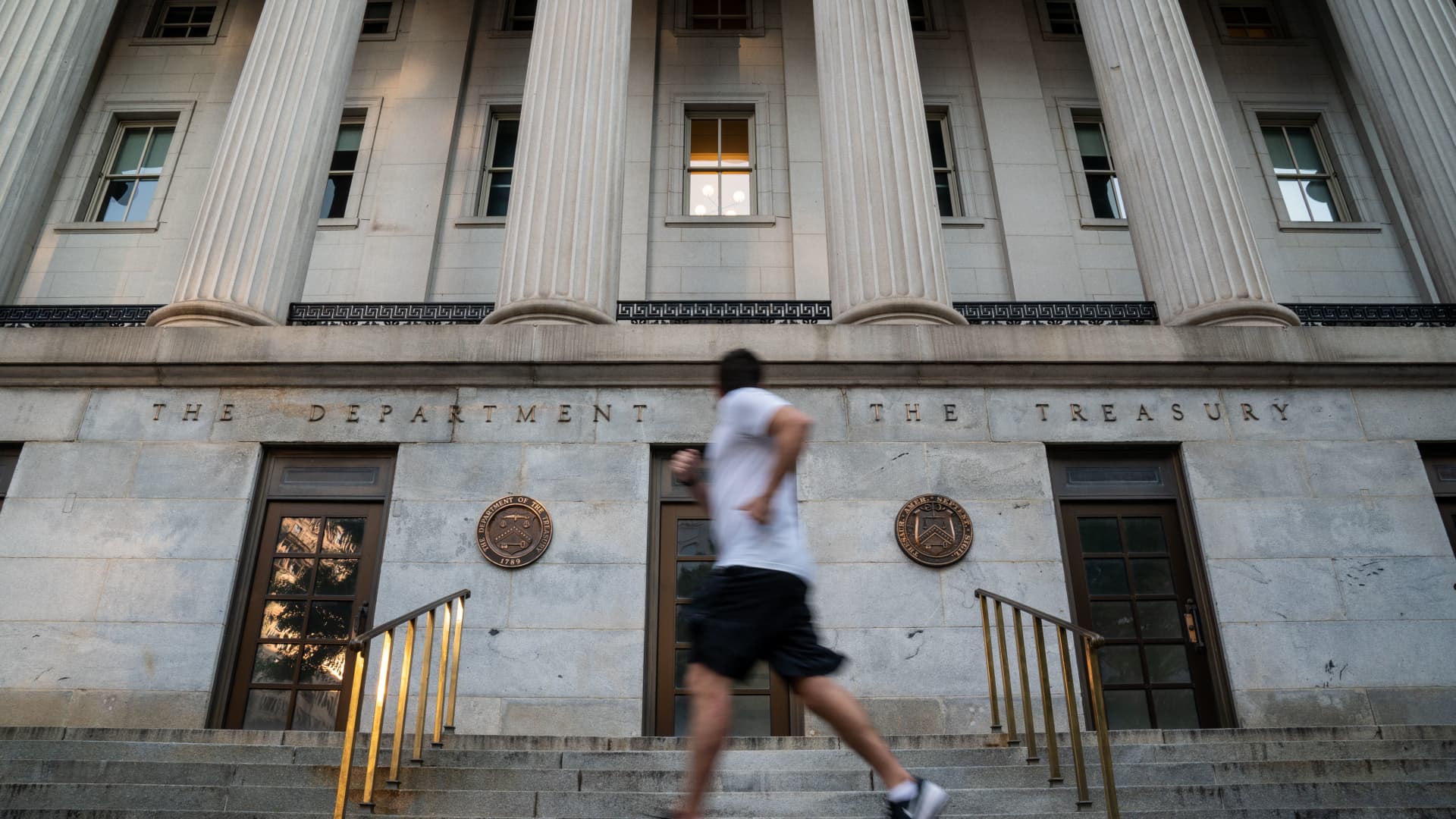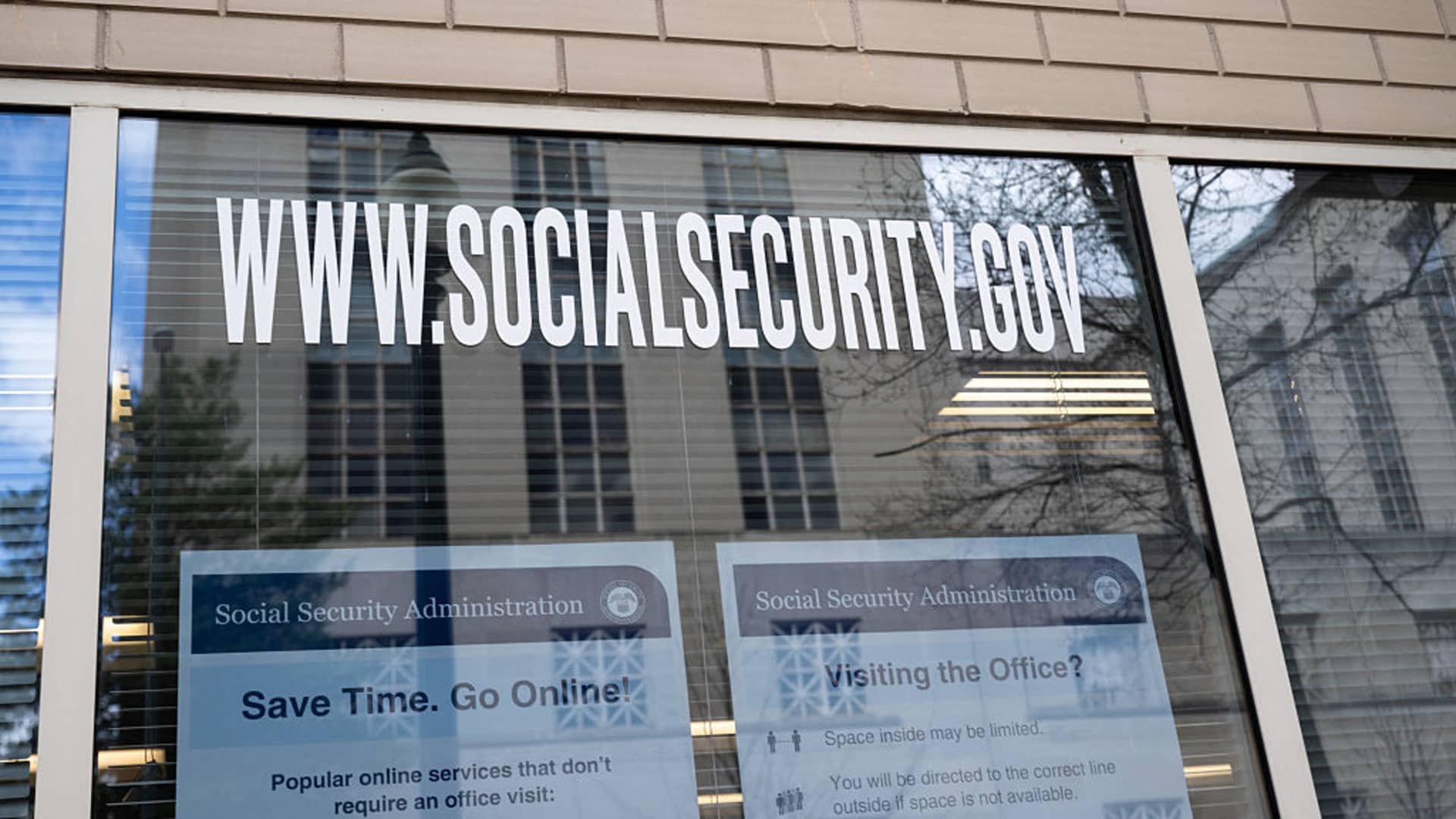A Social Security Administration (SSA) office in Washington, DC, March 26, 2025.
Saul Loeb | Afp | Getty Images
The Social Security Administration is adjusting the timeline and terms of its new identity proofing policies after receiving fierce criticism from advocates and beneficiaries.
The agency on March 18 announced new requirements that would require more people to visit a Social Security office to claim benefits or change their direct deposit information if they are unable to put those changes through online.
With those changes, the Social Security Administration was also putting through stronger identity proofing procedures with the aim of curbing benefit fraud.
The change was slated to go into effect on March 31 — an expedited two-week timeline, which experts said was unprecedented. The agency announced on Wednesday it will move that effectiveness date to April 14.
More from Personal Finance:
Judge slams Social Security chief for agency shutdown ‘threats’
Tax season is prime time for scams. How to protect yourself
Trump signs executive order aimed at shutting down Dept. of Education
“I just have never seen anything like it,” Bill Sweeney, senior vice president of government affairs at the AARP, a nonprofit organization representing Americans ages 50 and up, told CNBC.com last week of the change. The AARP first found out about the policy changes when they were publicly announced on March 18, rather than the typical protocol of being given the opportunity to weigh in ahead of time.
“This isn’t how this agency, or I’m not sure any government agency, rolls out new policies that affect 180 million people who pay into Social Security and rely on this program,” Sweeney said.
The AARP was pushing for the Social Security Administration to reverse the announced changes and work in a more “orderly, transparent and clear change management process,” Sweeney said.
New updates to identity proofing policy
On Wednesday, the Social Security Administration said it is adjusting the policy in response to “customers, Congress, advocates and others.” One of those adjustments is moving the date the new policy goes into effect to April 14.
Importantly, the agency has also adjusted the policy so that certain vulnerable individuals — those applying for Social Security disability insurance (SSDI), Medicare or Supplemental Security Income (SSI) who are not able to use the agency’s personal online accounts — will still be able to complete their claims entirely over the phone.
When applying for retirement, survivor or spousal/children’s benefits, individuals should first attempt to do so through their online “my Social Security account,” and if unable to do so online, they must visit a Social Security office to prove their identity and review their application.
To change their direct deposit information, Social Security beneficiaries should first attempt to do so through their online account. If online changes are not possible, they can visit a local Social Security office or call the agency at 1-800-772-1213 to schedule an in-person appointment.
The Social Security Administration said it recommends individuals call to schedule an in-person appointment for applications for retirement, survivors or spousal or children’s benefits where individuals are unable to apply online.
The AARP, in a statement from chief advocacy and engagement officer Nancy LeaMond, said the updates are a “good first step” to respond to concerns about the new policy.
“Merely delaying the implementation of this change is not enough, though,” LeaMond said. “SSA should take a deliberate approach to its proposed changes to customer service that seeks public input, follows a clear communication plan and allows a reasonable timeframe for compliance.”
Callers to 800 number face long wait times
The swift policy changes come as the Social Security Administration’s new leadership has come under scrutiny for its cooperation with the Trump administration’s Department of Government Efficiency, which the White House has tasked with slashing federal spending by cutting “waste, fraud and abuse” across government agencies.
The Social Security Administration’s acting commissioner, Lee Dudek, assumed the role in February after reportedly publicly disclosing he had been placed on administrative leave for cooperating with DOGE. Last week, Dudek threatened to shut down the agency in response to a federal judge’s temporary restraining order that prevents DOGE affiliates from accessing sensitive Social Security data. He has since reversed his stance.
As the agency’s leadership has been in flux, many observers say they have noticed longer 800 number wait times. Because DOGE has a running list of Social Security offices it plans to close, it will be more difficult to visit an agency office in person, experts say.
“The customer service situation at Social Security has really declined in the past month or so,” AARP’s Sweeney said.
The 800 wait times have “skyrocketed” since November, when they were at a low of about 11 minutes, Sweeney said.
The average time to answer a call is 21.2 minutes, according to Social Security Administration data, while nearly half of calls are not getting answered.
Yet callers have reported experiencing much longer wait times. In an effort to bolster transparency, Dudek plans to increase the “level of detail shared with the public to provide an honest and transparent view of wait times,” the Social Security Administration said on March 24.
As the agency transitions to the new identity proofing policy, some people who need its services feel like they are in limbo.
Lisa Cutler, communications director at the Alliance for Retired Americans, recently tried to contact the Social Security Administration on behalf of an elderly family to process an address change. She spent about an hour trying to get through on the agency’s 800 number before she gave up.
Cutler now estimates it would take a full afternoon to successfully get through to the agency. To make the process more complicated, the family member would have to be present to answer personal security questions.
Under Social Security’s new identity proofing policies, Cutler may instead have to set up an online account on her 87-year-old relative’s behalf. If the change can’t be processed that way, they would need bring the wheelchair-bound relative to a local Social Security office, which would require medical transportation.
The changes have felt like a “Silicon Valley go fast and break things” approach, Cutler said.
“But the problem is you’re dealing with a system that is meant to serve some of the most vulnerable people in our country,” Cutler said.


 Blog Post7 days ago
Blog Post7 days ago
 Finance7 days ago
Finance7 days ago
 Finance1 week ago
Finance1 week ago
 Economics1 week ago
Economics1 week ago
 Accounting1 week ago
Accounting1 week ago
 Personal Finance7 days ago
Personal Finance7 days ago
 Personal Finance1 week ago
Personal Finance1 week ago
 Economics1 week ago
Economics1 week ago










